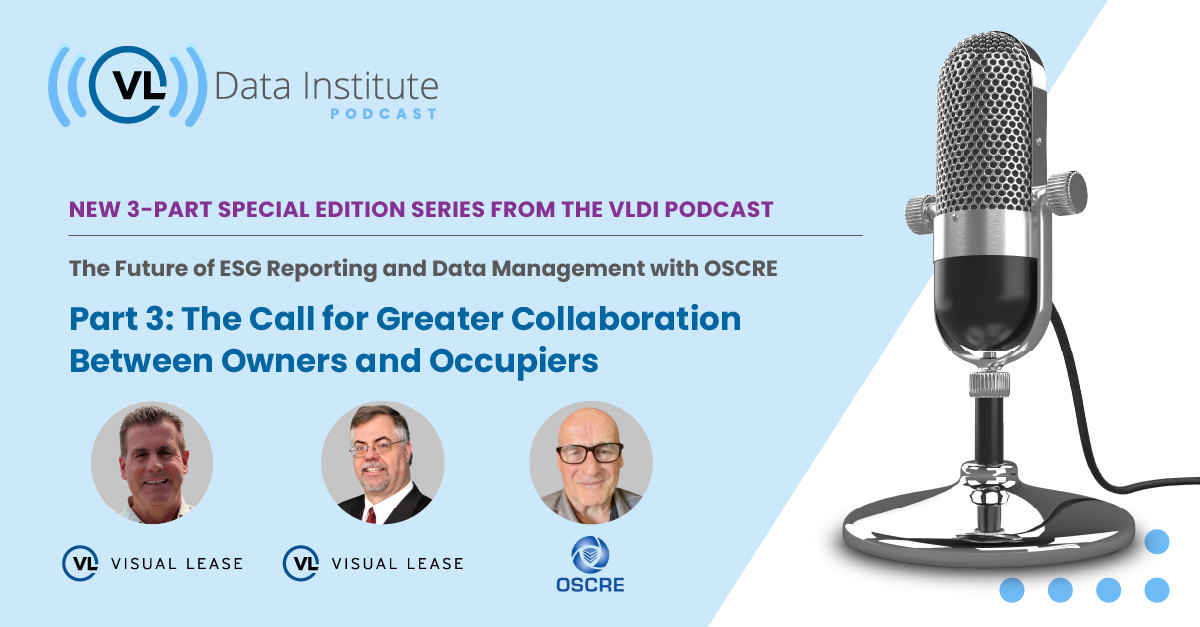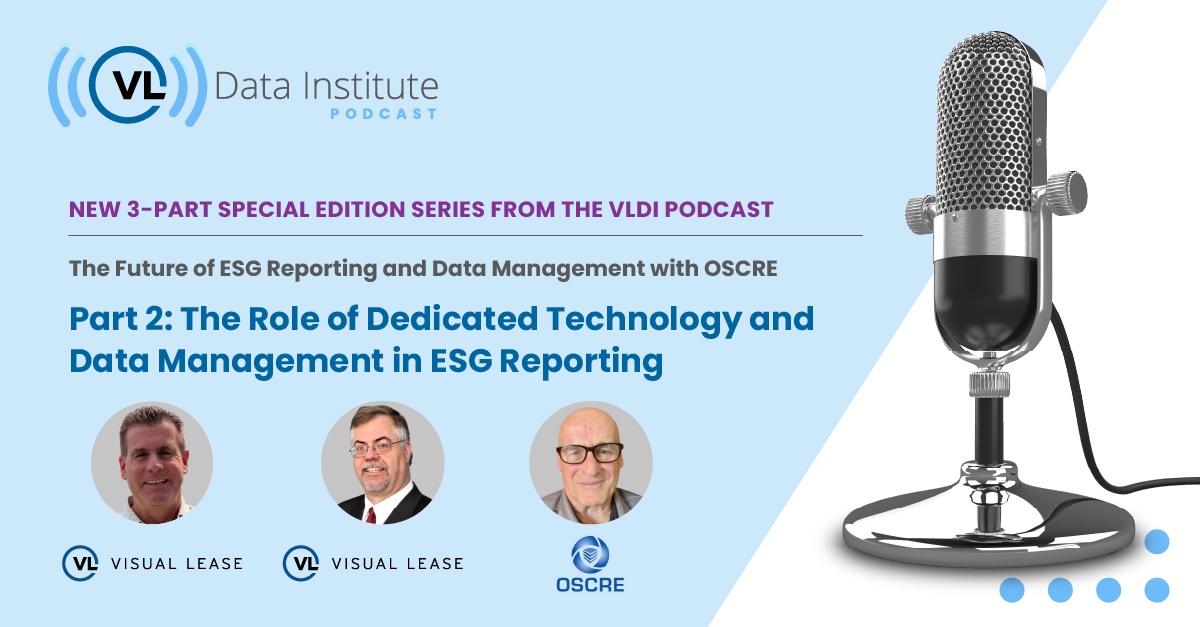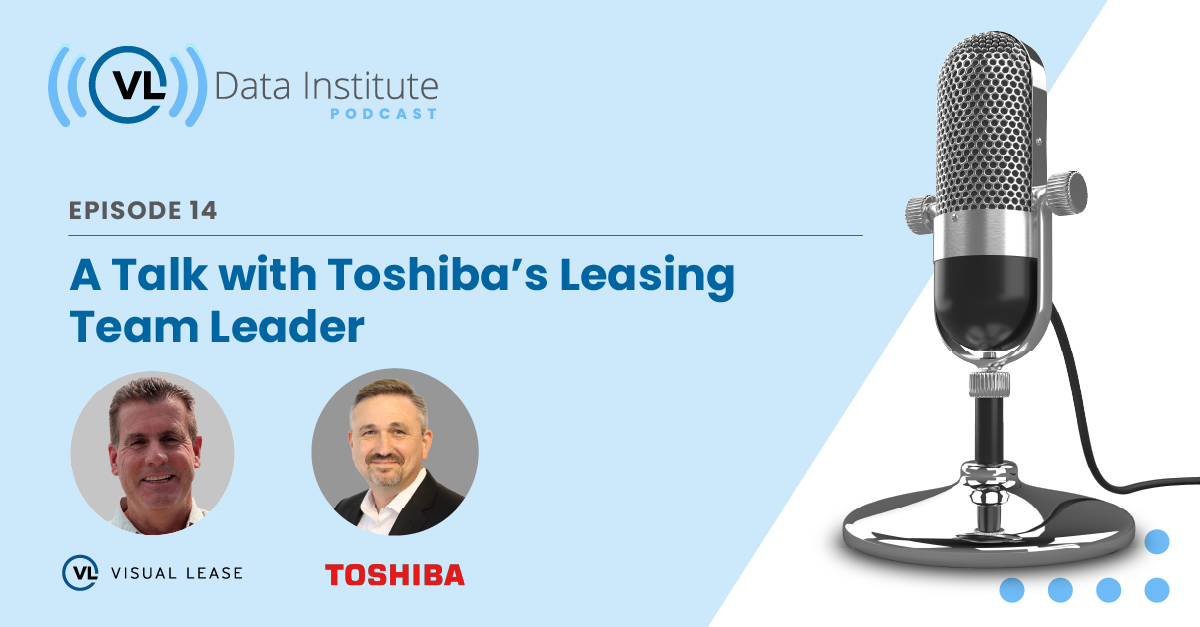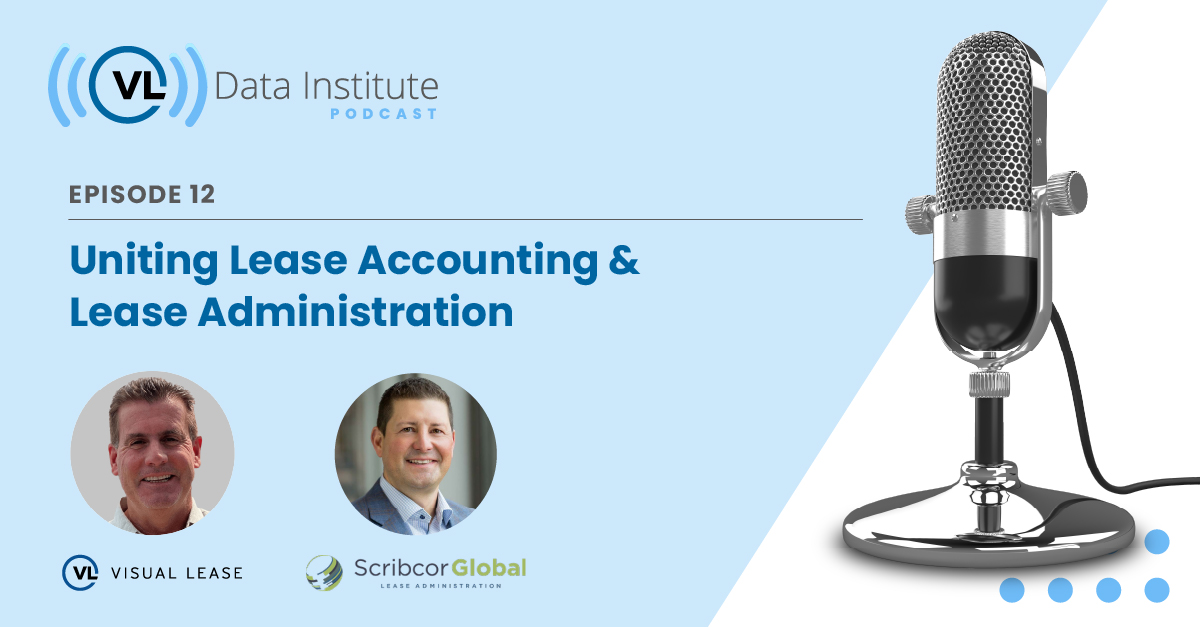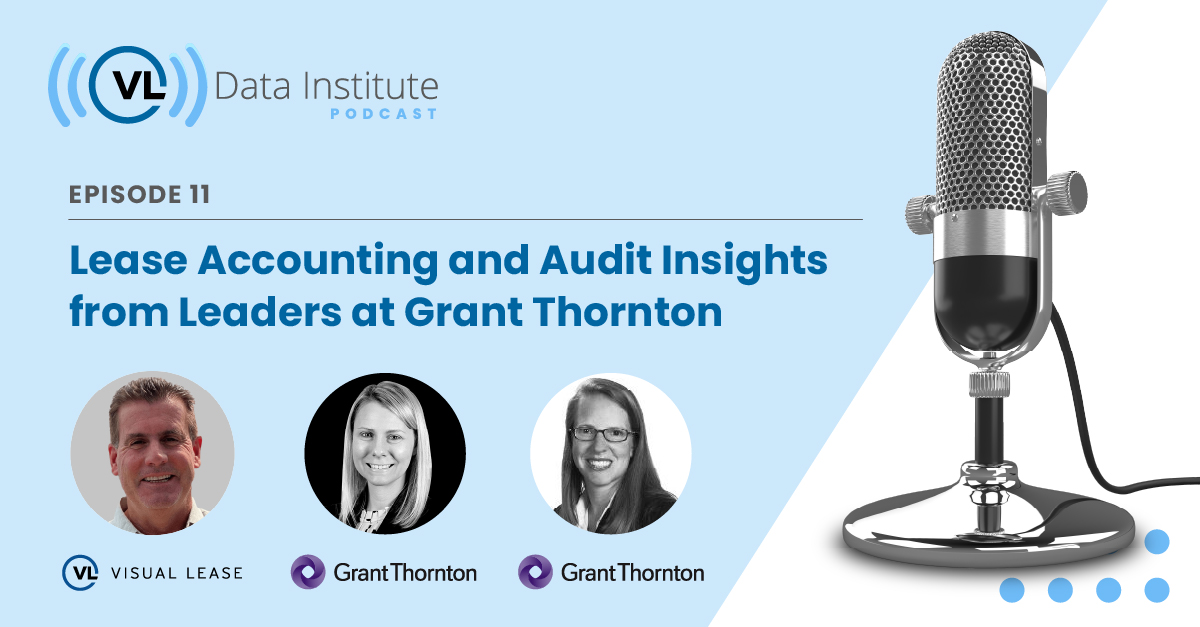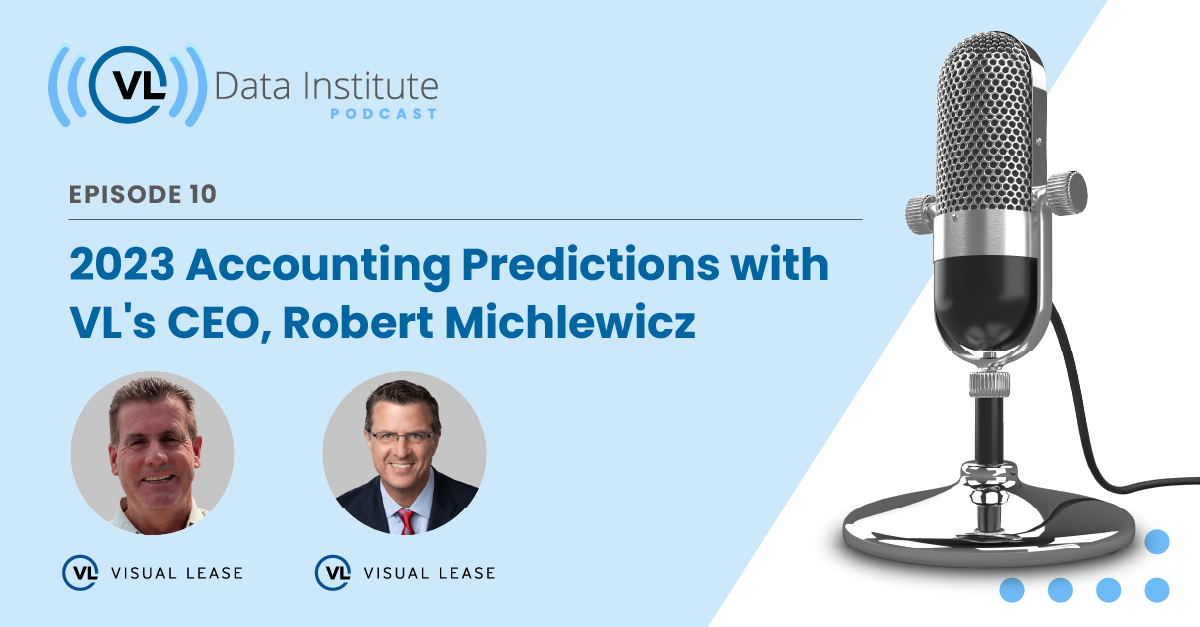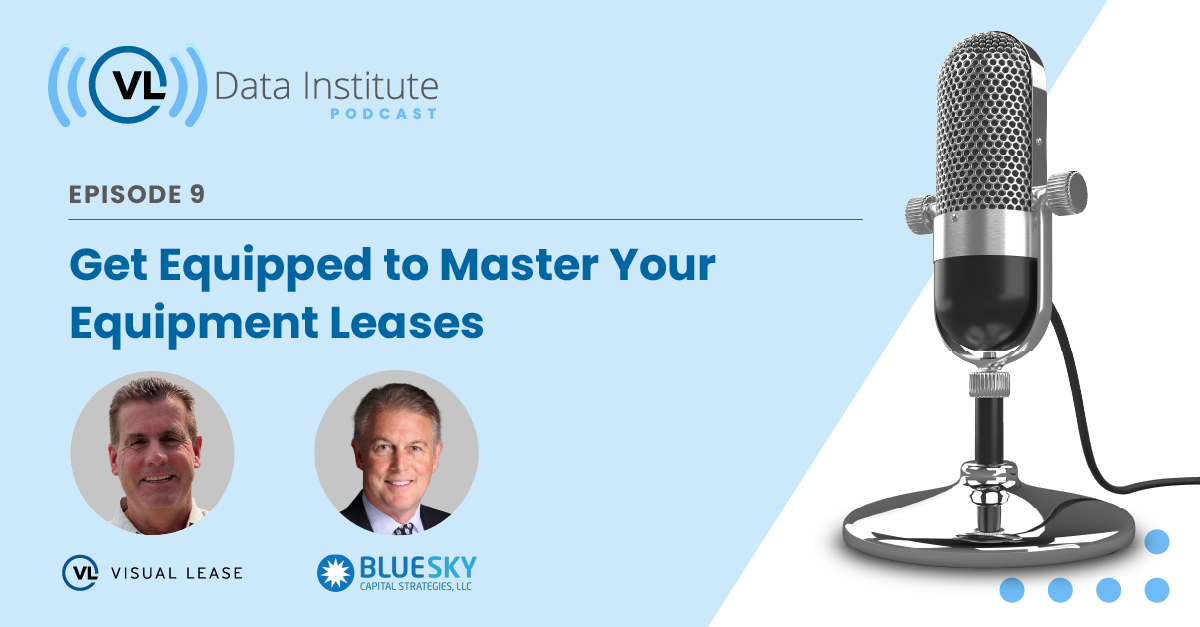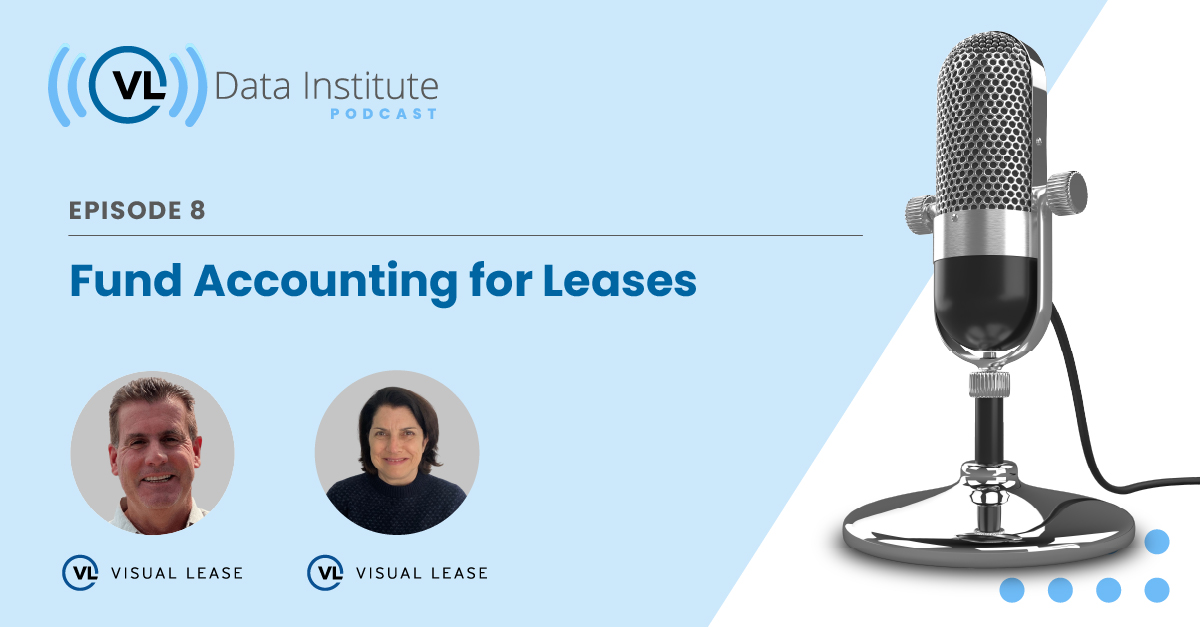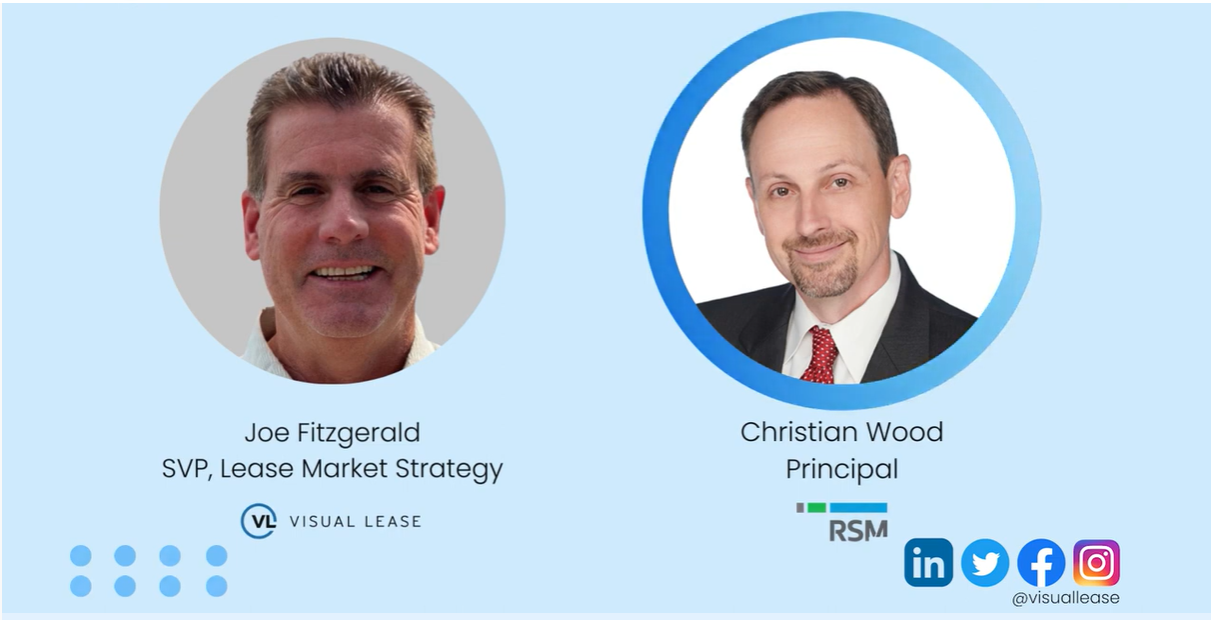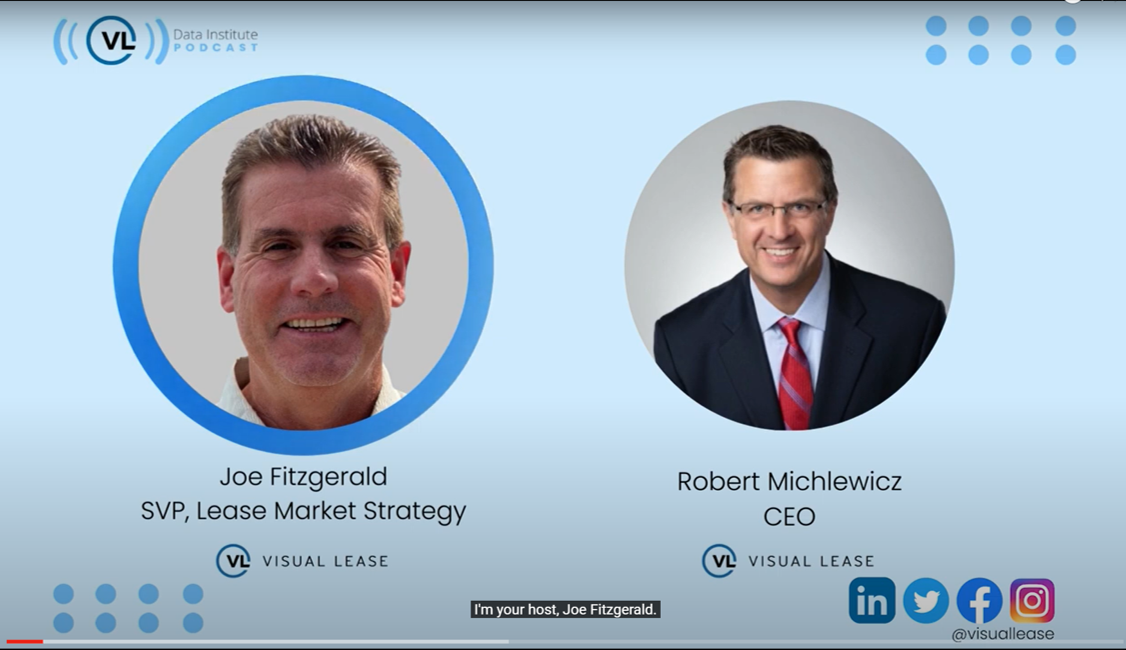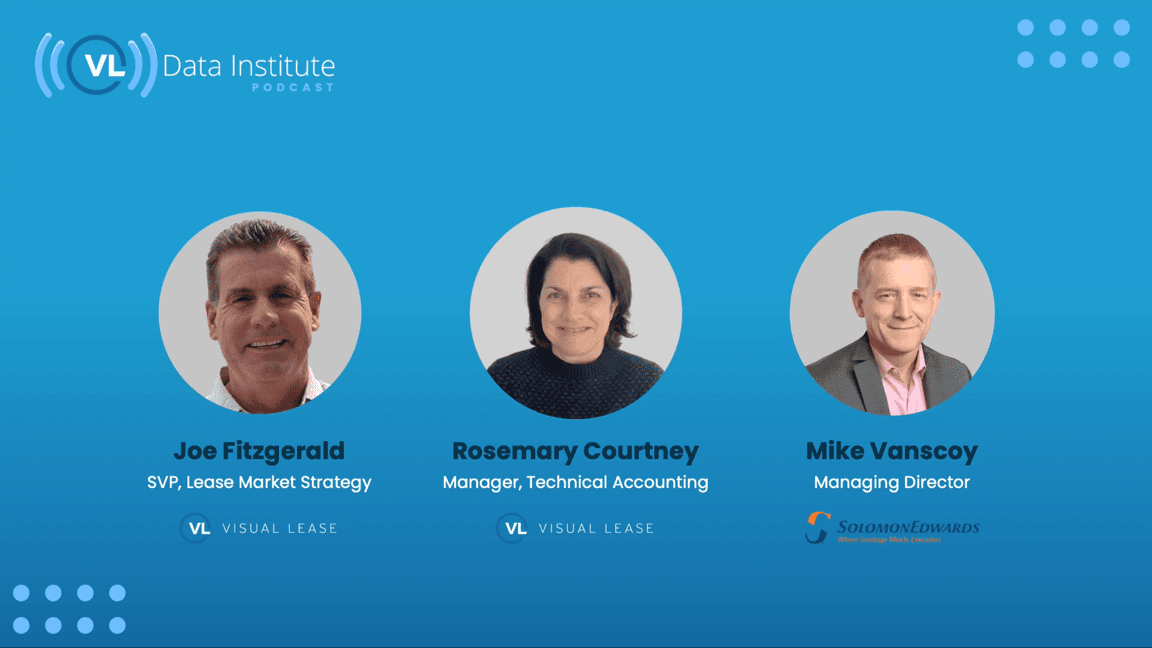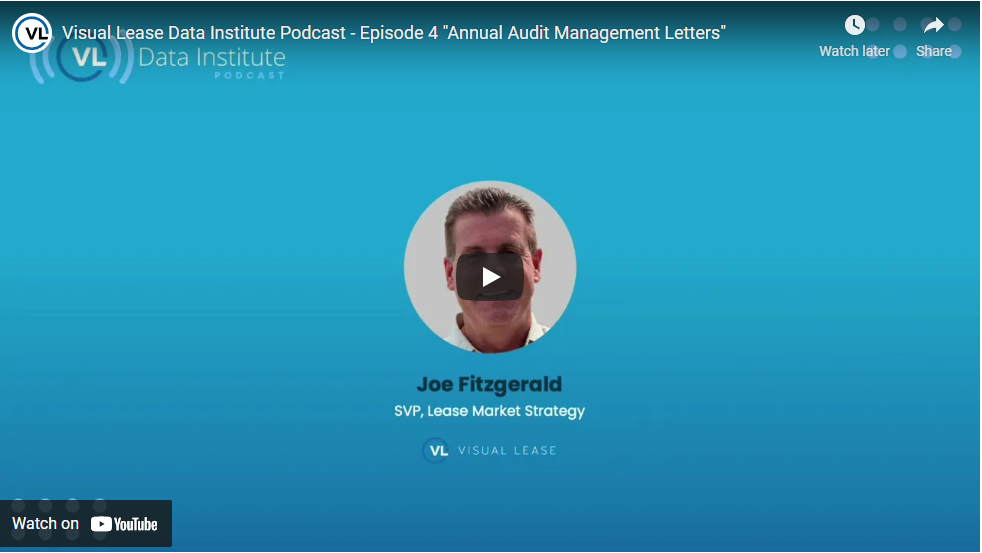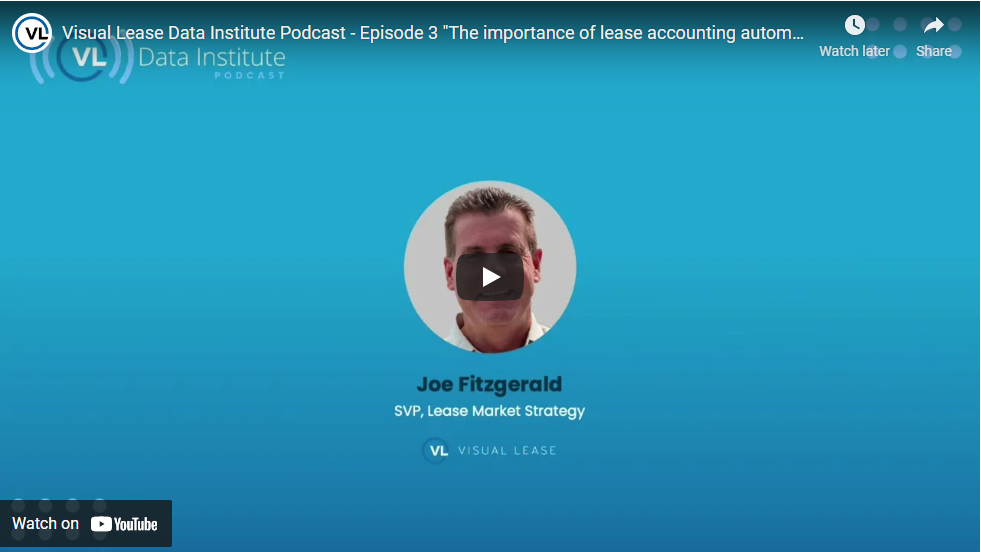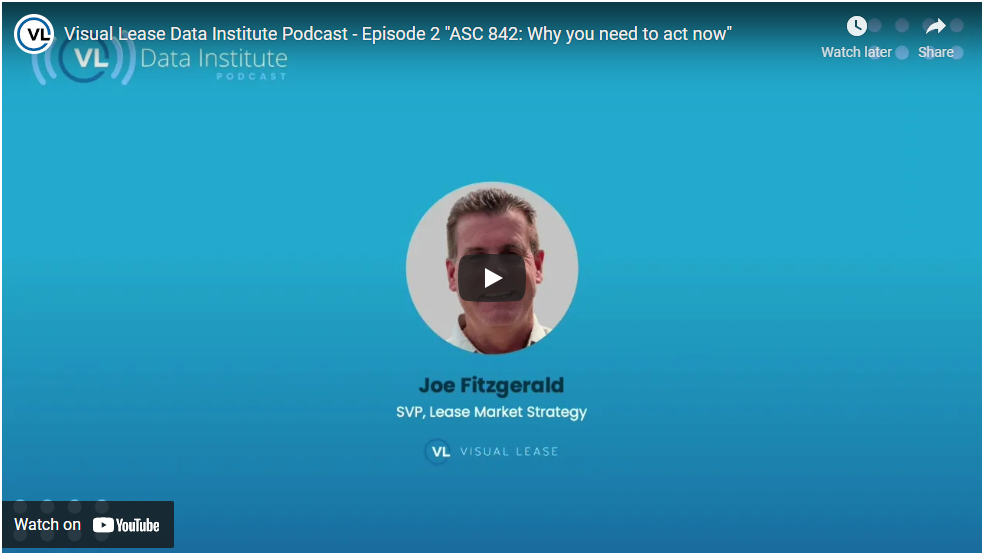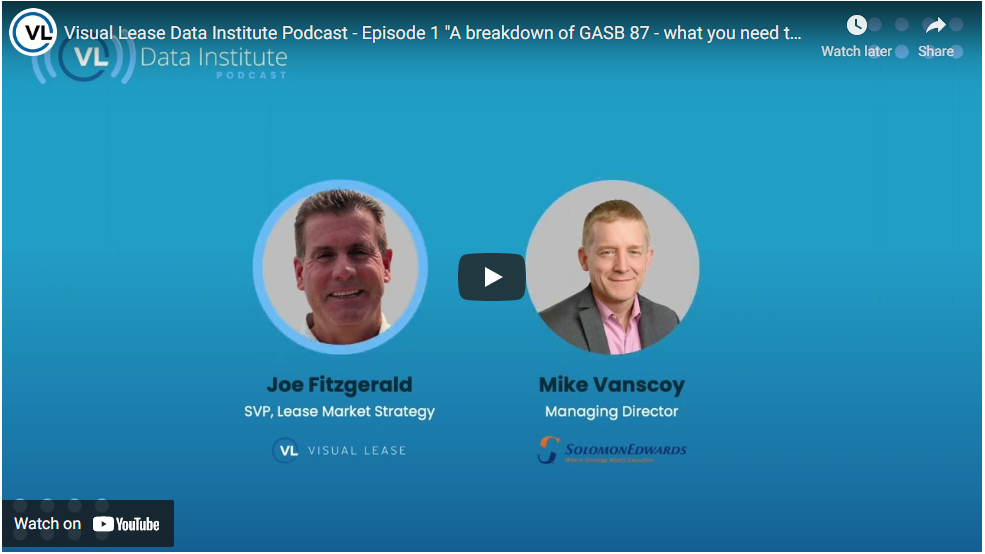In this episode of The VLDI Podcast, Jamie Covert, a leader in the lease administration industry as the President & CEO of Scribcor Global Lease Administration speaks with our host Joe Fitzgerald on the worlds of lease accounting and lease administration and how they operate alongside each other.
Read Transcript
VLDI Podcast Episode 12 Transcript
Joe:
Hi, I’m your host, Joe Fitzgerald, and welcome back to the Visual Data Institute Podcast. Here at VL, we empower organizations to turn their lease portfolio into a strategic asset. Our solutions help companies easily sustain compliance with FASB, IFRS and GASB lease accounting standards and implement proper lease controls to improve the financial and operational performance of their leases.
Today, I’m joined by Jamie Covert, President of Scribcor Global Lease Administration, a valued partner of Visual Lease. Jamie is here today to discuss a very important distinction between two mission critical business functions: lease accounting and lease administration. While the two may sound similar, they’re actually quite different. Utilizing both processes in the right way can really make a big impact when it comes to compliance, maintenance and future lease portfolio optimization.
So let’s dive right in. Welcome, Jamie. Thanks for coming on today.
Jamie:
Thanks, Joe. It’s a pleasure to be with you.
Joe:
Jamie, first question, how do you see lease administrators supporting the Office of the CFO?
Jamie:
So today, lease administration is supporting the Office of the CFO by maintaining the critical lease data and the components that are supporting their ASC 842 and IFRS calculations. Those are anything from amendments to, you know, any changes in the leases, terminations, all that data has to be maintained and and lease administration plays a critical role in making sure that that that data is accurate and that they’re communicating to the accounting teams so that before they go into a month end and quarter end close they know all the leases that have been updated and that need to be amended on the financial statement.
So lease administration really, they’re holding the keys to the data and they need to be pretty seamlessly integrated with the with the Office of the CFO and the controller so that they’re generating those schedules.
Joe:
Some people view leases as a one and done when they are first recorded. Is that really the right way to view leases?
Jamie:
No, leases are dynamic. A lease portfolio changes on a daily, weekly, monthly basis. Leases have variable expenses, one time charges… Leases contain escalation amounts. There’s a lot of leases, especially international leases, are tied to indexation and indexes. And so there is always something changing in the lease portfolio. The larger the portfolio, the more the changes.
So really consistent with everything that we’ll probably cover today. Having a solid and sound process for lease administration is really critical. The process here in the U.S. and Canada is really different than in an international lease administration. So really, having clearly documented processes and playbooks is is something that we advise all of our clients and that when we’re operating and taking over that function, we absolutely have those and it brings benefits, you know, whether you’re using a third party or whether you have a team of internal experts, having qualified lease administrators is going to improve your internal controls. It’s going to improve the speed that you’re able to access data and report. It’s going to be vital for internal and external audit support. So as companies are going through audit processes, having all these things managed in a sound way is going to improve that process and speed up that process.
And then the biggest component, leases contain so much valuable data for organizations that go into strategic planning. They’re supporting, forecasting, impact analysis, lots of various financial data space planning is become huge now with our post-COVID world and a lot of companies moving to, flex and remote work.
So in order to adequately space plan, you need up to the minute lease administration and data and data on and all those lease obligations. So, these are really important components to being able to deliver and execute on all those things.
Joe:
So given all the activities you just described, do you find that companies are underestimating the time it needs they need to administer leases?
Jamie:
Not all companies. I think where there’s a lot of challenges and where companies underestimate, it’s the effort and the time that goes into building those processes, especially for companies that have gone through mergers or have decentralized situations. It takes an enormous amount of time to organize a global portfolio.
And so if there’s anything that’s overlooked, I think it’s the speed and the time and just the manual process and the hours that it takes to get that portfolio organized. But as far as the day to day, I mean, really there’s three real kind of critical components that we manage as lease administrators on a day to day basis.
And you break them down into categories to: changes to the portfolio, your variable expenses and then your risk mitigation. Changes to the portfolio would be any new leases or amendments that are executed. Renewal letters, any terminations and then acquisitions. Companies are always acquiring other companies, so you really need to have the appropriate resources in place to handle an acquisition, whether that’s an internal resource or whether you have a third party that you may lean on during an acquisition.
But it really comes down to handling all of these things. It’s a documented process. The most critical step is you really want to build a lease abstraction, a scope of work. Sometimes people refer to that as data attributes. You want to be as consistent as possible across your portfolio with abstracting the same amount of data in the same fashion for each location.
But the second category I would describe is variable and other expenses. The most common and I think the most important is common area maintenance, also referred to as operating expenses, camera reconciliations, operating expense reconciliations. This is one of the most important functions that the lease administration team performs because it’s a really significant generator of savings.
Unfortunately, errors in these reconciliations can be common. And, you know, having a process and a documented process of exactly what you’re going to cover and what’s called the desktop audit coupled with some type of a formal full audit program, is the best possible solution in terms of making sure you know that your company is maximizing that savings component.
You should really be building on a process where during your desktop audit, you’re flagging and identifying leases that should be moved on to the full audit team. Most of the time it does need to be handled by a different team because it’s a different skill. I guess the last category that I would bring up are your ongoing risks.
And I really think the ongoing risks are most efficiently mitigated and almost completely resolved when you put in a solid process and procedures from the start with the well-documented playbook. But some of those things that can come up or you missed or delayed payments, these are frequent when you have a landlord change or a vendor change or a bank change that isn’t communicated to the lease administration team.
Sometimes that’s from the property manager’s office. Other times that could be, you know, internally if things are decentralized, if invoices are received at the local level, sometimes there’s failures to forward those. So having processes in place to mitigate that makes a lot of sense. As long as you’re using a database, usually you don’t have to deal with any kind of manual errors or formula errors. But, for companies that are still working in Excel spreadsheets, this can be something that can can occur and can present challenges. One of the things that we’re seeing, unfortunately, that is increasing is fraud, cybersecurity and email fraud. I mean, it’s becoming much more common.
So having dual controls in place for certain things, like when you’re changing in information or when you’re changing a vendor, putting something like that in place is going to mitigate any instances of fraud, having callbacks where you’re actually verifying something over the phone with somebody versus just taking their email because we’ve seen some pretty sophisticated spoofs from time to time where it looks like an email is coming from a person you’ve been working with for months or years. But you know, that’s not always the case. So those are really some of the ongoing risks that that companies face, that if they put processes together, you can pretty much mitigate those.
Joe:
So, Jamie, you’ve covered up a lot of topics for us. As we wrap up, any closing thoughts or key takeaways for the listener?
Jamie:
Yeah, just, you know, really, again, hammering home the same point of process, process, process. You know, if you document your processes and you follow through, then I think you’re going to mitigate most of your problems and you’re going to be very proactive and you’re going to be an asset to your the rest of your internal teams on the strategy side, on the transaction side, and in the accounting office. Just having lease administration as a significant collaborator within those other internal departments. There are a few new things coming down the road, and it’ll be interesting to see what role these administration plays. I know everyone’s trying to figure out ESG right now, Europe is obviously a lot further down the road than we are in the US. We’ll know the requirements at some point in the U.S. And once we know what the requirements are and how those calculations are going to work and what exactly we’re going to be calculating and measuring, I think what’s clear is that real estate is going to be a big component.
What’s unclear is who’s going to be responsible for what. But I do think that some of that is going to be within the real estate group and lease administration will probably play a part of that. And then as I mentioned before, everyone’s really trying to figure out, what’s the right size of our portfolio now.
So space planning is critical and lease administration data that lease administration is responsible for is really a critical component so that companies can effectively make proactive decisions as they have leases coming up for renewal.
Joe:
That will conclude today’s episode of the VLDI Podcast. Jamie, thank you so much for coming on the show and providing your expert knowledge and insights. If you enjoyed this episode and want to catch up on other resources from the Visual Lease Data Institute, be sure to follow our LinkedIn, Twitter, Instagram and Facebook pages @visuallease, as well as our new LinkedIn community page, which you can join by using the link in the YouTube description below.
And don’t forget to tune in to the next episode of the Visual Lease Data Institute Podcast, where our focus is on helping you leverage your lease portfolio as a strategic asset.











